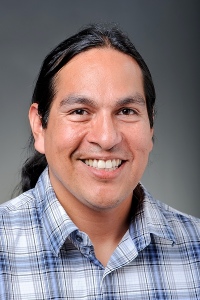Native American heritage reaches deep into campus
November is celebrated as Native American Heritage Month. Inside UW–Madison recently caught up with Aaron Bird Bear, an academic advisor in the School of Education and a campus leader in the Native American community, to talk about the history of what is now the UW–Madison campus.
Inside UW–Madison: What’s the most important thing for people to know about the rich Native American history of campus?
Aaron Bird Bear: As far as the deep human story of Dejope (Four Lakes), our earliest campus find from out by Picnic Point reminds us that humans have been living, loving and laughing along the lakeshore for 12,000 years.
Through archaeological research completed by our campus, we now have deeper appreciations of the Late Woodland society’s 2,500-year effort of monumental earthworks covering thousands of square miles of what is now Wisconsin.
We are also beginning to further understand and acknowledge the “Old Copper Culture” of the Great Lakes dating back 6,000 years. The effigy mound earthworks remaining on campus, along with the Copper Culture, place Wisconsin as perhaps “home to one of the earliest socially complex societies in the Upper Great Lakes.” Furthermore, scholarship now considers that “the earliest inhabitants of the Four Lakes area are believed to be the descendants of the first humans to inhabit the New World.”
iUW: Could you explain a little about the more recent history of the region?
ABB: As for history, in a short 170 years, there has been a complete physical and social transformation of Dejope from a marshy burr oak savannah with much less forest cover that was home to a 99 percent Ho-Chunk and one percent non-Indian society, to a terraformed, densely forested city hosting a 99 percent non-Indian society. Even the shoreline of Lake Mendota is altered as the lake level was raised four feet with the creation of the lock between Lake Monona and Lake Mendota.
But as historians implore us to remember, the people and societies in and around Dejope prior to the arrival of Americans were a “mixture of ethnicities in a region that had long been multiethnic and where people used intermarriage as a means of assimilating newcomers and facilitating communication and accommodation.” What is now southern Wisconsin was a place where the Sauk, the Kickapoo, the Potawatomi, the Menominee, the Ho-Chunk and the Ojibwe could all call their ancestral home in some way or another. There was and continues to be intermarriage throughout the region that connects many communities of all stripes.
iUW: Tell us about Native American Heritage Month.
ABB: Native American Heritage Month is a catalyst for the small American Indian campus community at UW–Madison (about 320 students, and 24 faculty and staff) to organize and celebrate our many cultures.
Of the 564 federally recognized American Indian and Alaska Native nations, over 40 are represented in our campus community. Each nation has different customs and cultures and often, a different language.
Of the 170 American Indian languages still spoken today, our campus is fortunate to have two language groups with students studying either Ho-Chunk or Ojibwe language.
View a complete schedule of events.
iUW: What are the best resources for those on campus interested in learning more about the Native American history of campus?
ABB: There are several great resources to learn more about Native American history of campus and region.
Lakeshore Nature Preserve, Native Americans and the Preserve
Newberry Library, Indians of the Midwest
2011 Convocation presentation on history of campus area (audio)
Tags: academic staff, diversity, history





